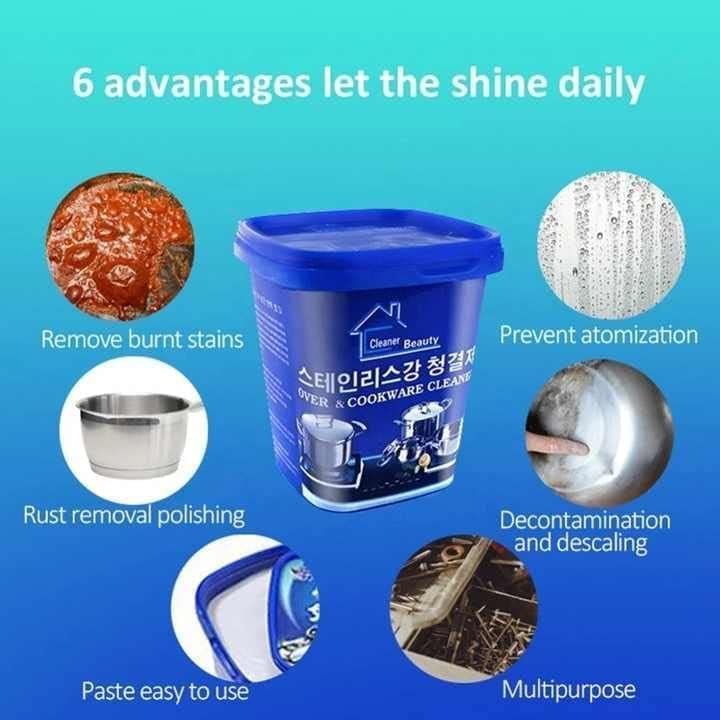Understanding Your Cookware
Before diving into cleaning, it’s crucial to understand the materials your cookware is made of. Stainless steel, non-stick, cast iron, copper – each requires a different approach. Using the wrong cleaning method can damage the surface and shorten the lifespan of your beloved pots and pans. Consider this your first step in mastering better homes and gardens cookware cleaning tips.
Essential Cleaning Supplies
Having the right tools makes all the difference. Here’s a list of essentials:
- Soft sponges and cloths: Avoid abrasive scrubbers on delicate surfaces.
- Dish soap: A mild, grease-cutting dish soap is your best friend.
- Baking soda: A natural abrasive and deodorizer.
- White vinegar: Excellent for removing hard water stains and mineral deposits.
- Bar Keeper’s Friend: A powerful cleaner for stainless steel (use with caution).
- Soft-bristled brush: For scrubbing hard-to-reach areas.
Cleaning Different Types of Cookware
Now, let’s get specific. Each type of cookware needs special attention. Ignoring these nuances can lead to damage and frustration.
Stainless Steel
For everyday cleaning, warm soapy water and a soft sponge usually suffice. For stubborn stains, try a paste of baking soda and water. Apply, let it sit for a few minutes, and then scrub gently. Bar Keeper’s Friend can be used for tougher stains, but always follow the manufacturer’s instructions.
Non-Stick
Gentle is key! Avoid abrasive scrubbers and harsh chemicals. Warm soapy water and a soft sponge are all you need. If food is stuck, soak the pan in warm soapy water for a few minutes before cleaning. Never use metal utensils on non-stick surfaces.
Cast Iron
Cast iron requires a unique approach. After cooking, scrape out any food residue. Wash with hot water and a stiff brush (avoid soap unless absolutely necessary). Dry immediately and then season with a thin layer of oil. This prevents rust and maintains the pan’s non-stick properties.
Copper
Copper cookware is beautiful but requires special care. Use a copper cleaner to remove tarnish and maintain its shine. Avoid abrasive scrubbers, which can scratch the surface.
Preventing Stains and Buildup
Prevention is always better than cure. Here are a few tips to minimize stains and buildup:
- Don’t overheat your cookware. This can cause food to burn and stick.
- Use the correct heat setting for the type of food you’re cooking.
- Clean your cookware immediately after use.
- Store your cookware properly to prevent scratches and damage.
Deep Cleaning and Restoration
Sometimes, your cookware needs a little extra TLC. For deep cleaning, consider these options:
- Boiling water and baking soda: Fill the pan with water, add a few tablespoons of baking soda, and boil for 10-15 minutes. This can loosen stubborn food particles.
- Oven cleaner: Use oven cleaner (following the manufacturer’s instructions) to remove baked-on grease and grime. This is a last resort and should be used with caution.
Frequently Asked Questions (FAQ)
Q: How do I remove burnt food from the bottom of a pan?
A: Soak the pan in warm soapy water overnight. Then, try scrubbing with a paste of baking soda and water. If that doesn’t work, boil water and baking soda in the pan for 10-15 minutes.
Q: Can I put my non-stick cookware in the dishwasher?
A: While some non-stick cookware is dishwasher-safe, it’s generally best to hand wash it to prolong its lifespan. The harsh detergents and high heat of the dishwasher can damage the non-stick coating.
Q: How do I season cast iron?
A: Preheat your oven to 350°F (175°C). Wash and dry the cast iron pan. Apply a thin layer of oil (vegetable, canola, or flaxseed) to the entire surface of the pan, inside and out. Wipe off any excess oil. Place the pan upside down in the oven and bake for one hour. Let the pan cool completely in the oven.
Q: What’s the best way to clean burnt milk from a saucepan?
A: Burnt milk can be tricky! Try filling the saucepan with cold water and adding a generous amount of salt. Let it soak for several hours, or even overnight. The salt helps to loosen the burnt milk, making it easier to scrub away.






